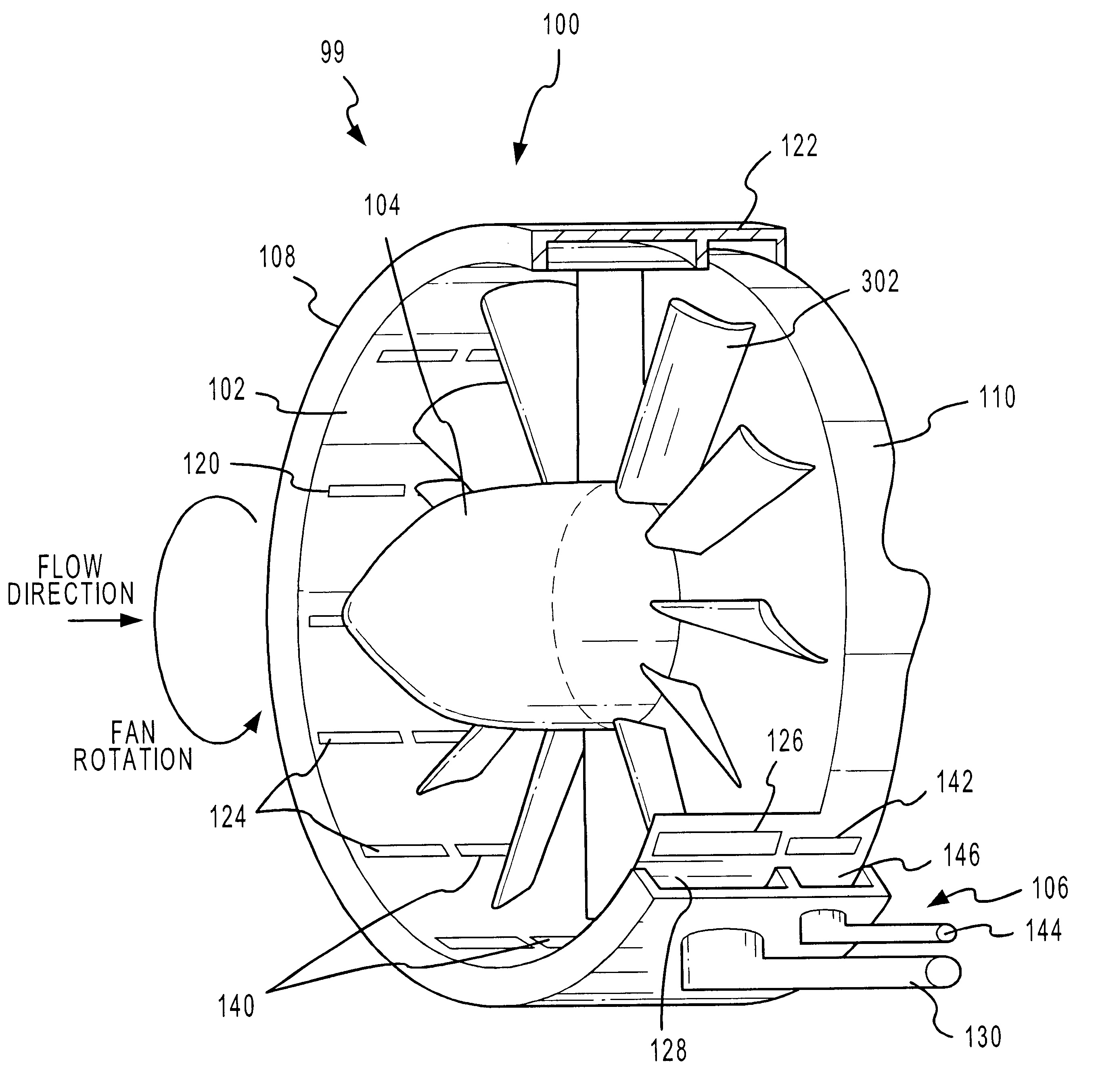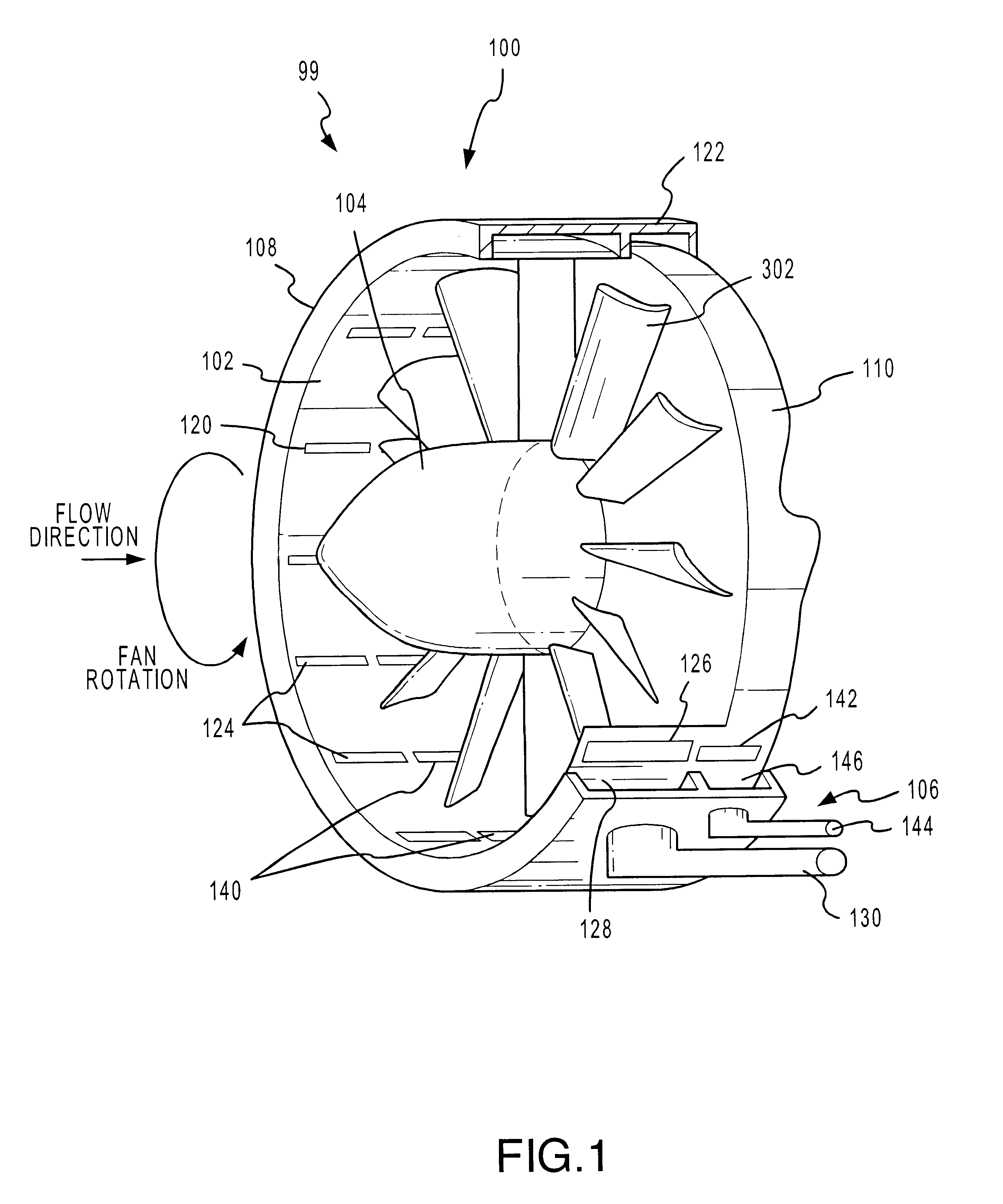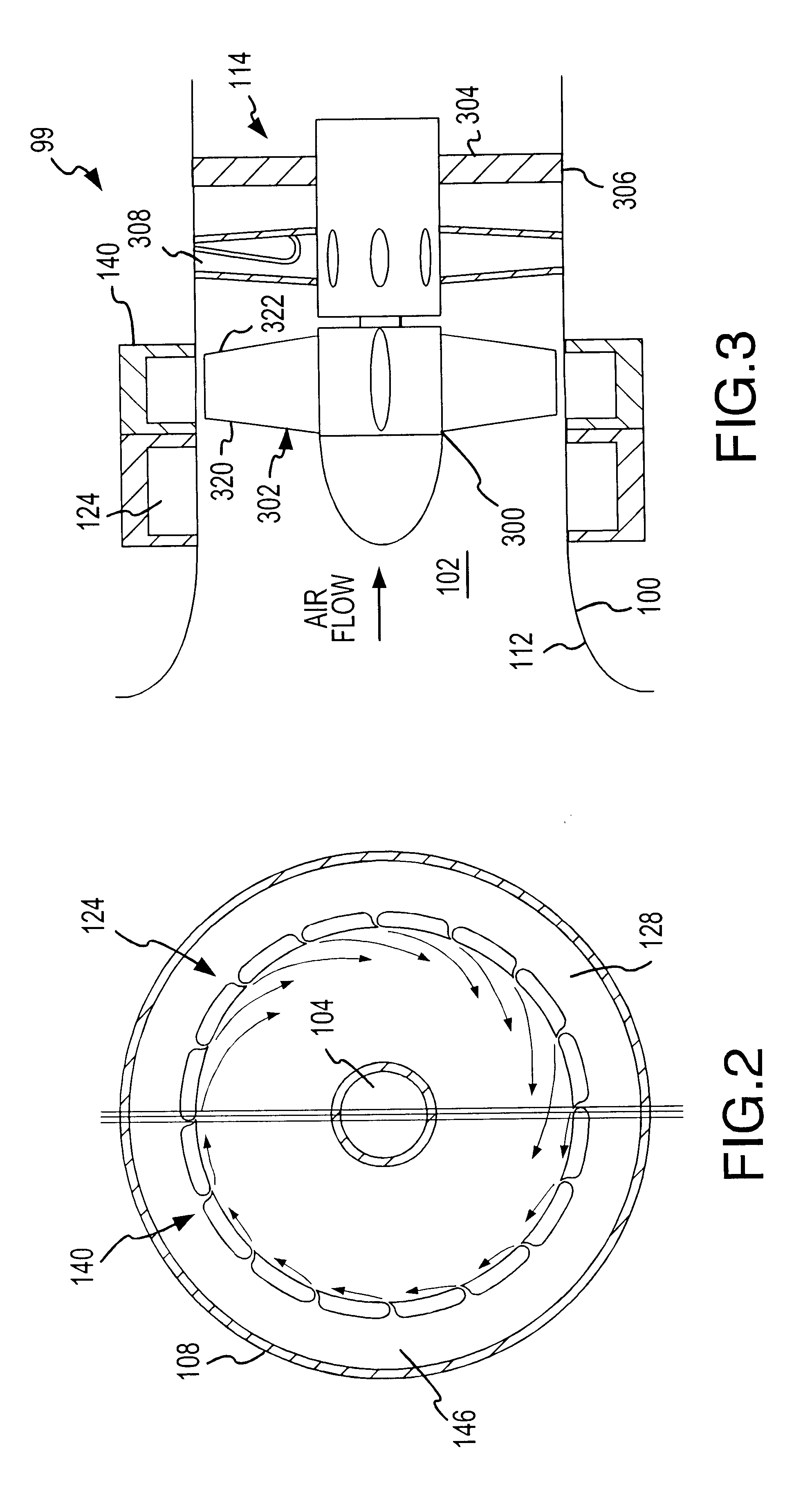Method and apparatus for a fan noise controller
- Summary
- Abstract
- Description
- Claims
- Application Information
AI Technical Summary
Problems solved by technology
Method used
Image
Examples
Embodiment Construction
Referring now to FIGS. 1 and 3, a fan system 99 according to various aspects of the present invention suitably comprises: a housing 100 having a fluid flow channel 102; a power plant (not shown); a fan assembly 104; and a fan noise control system 106. The present embodiment is described in conjunction with an aircraft turbofan system, though various aspects of the present invention may be used in conjunction with any system having rotating blades including, for example, commercial cooling fans, marine propulsion systems, blow dryers, and the like. In particular, the housing 100 suitably defines the fluid flow channel 102 in which the fan assembly 104 is disposed. Various components of the fan assembly 104 suitably rotate within the fluid flow channel 102, and the fan assembly 104 is suitably coupled to the power plant. The power plant provides power to rotate the fan within the housing 100.
The fan assembly 104 suitably comprises any apparatus having rotating blades. In the present e...
PUM
 Login to View More
Login to View More Abstract
Description
Claims
Application Information
 Login to View More
Login to View More - R&D
- Intellectual Property
- Life Sciences
- Materials
- Tech Scout
- Unparalleled Data Quality
- Higher Quality Content
- 60% Fewer Hallucinations
Browse by: Latest US Patents, China's latest patents, Technical Efficacy Thesaurus, Application Domain, Technology Topic, Popular Technical Reports.
© 2025 PatSnap. All rights reserved.Legal|Privacy policy|Modern Slavery Act Transparency Statement|Sitemap|About US| Contact US: help@patsnap.com



